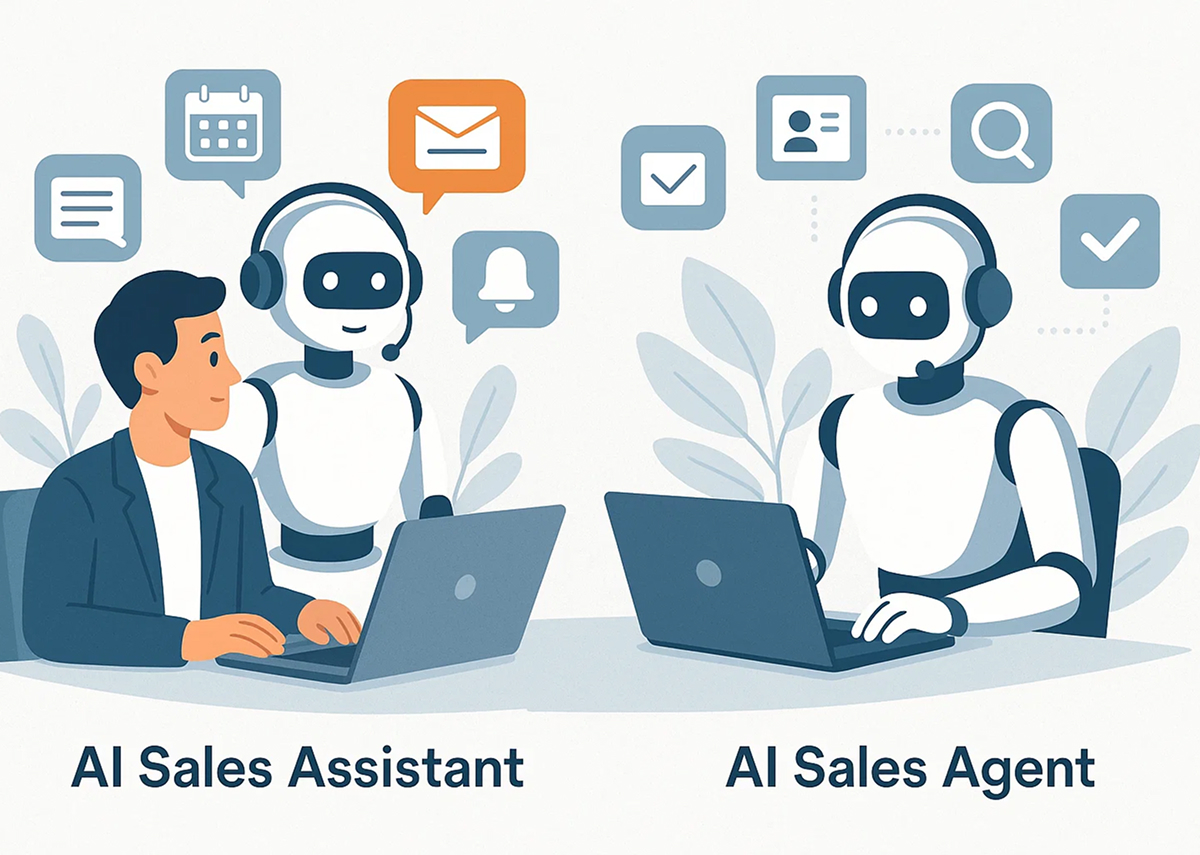
As AI becomes a core part of modern sales, there’s a growing misconception that AI sales agents and AI sales assistants are interchangeable.
They’re not.
One is a full-stack revenue engine. The other is a helpful companion.
If you’re evaluating automation for your outbound strategy, it’s critical to understand this difference — because what you choose will impact your pipeline, your workflows, and ultimately, your growth.
In this blog, we’ll break down:
AI sales assistants are tools built to support sales reps — not replace them.
They typically handle:
They’re co-pilots — not pilots.
These assistants wait for instructions, and help speed up manual tasks. They are reactive, not proactive.
An AI sales agent is a trained, autonomous system that runs your outbound function — from prospecting to meeting booking.
They don’t assist. They execute.
They behave like SDRs — only smarter, faster, and scalable.
While assistants support sales reps, agents act as them.
The terms “assistant” and “agent” are often used interchangeably in marketing.
But they represent two different modes of operation:
Many companies advertise their AI tools as “agents” — when in reality, they require manual prompts, lack multichannel support, and cannot complete workflows end to end.
This mislabeling leads buyers to overestimate what they’re getting.
Sales assistants can help write an email — but they won’t:
Sales agents like Remo do all of this without manual input.
Assistants usually operate in a single interface (e.g., email).
Agents manage:
If a lead replies, “Not the right time,” a sales assistant won’t know what to do.
An agent like Remo will:
Assistants need human intervention. Agents decide and act.
Only AI sales agents own the calendar process:
Assistants don’t even reach this stage.
At Inagent, we built Remo to solve a problem:
Sales teams spend too much time doing repetitive outbound work — and not enough time closing.
So we didn’t want to build another sales assistant.
We built a sales agent:
✅ Prospect using ICP filters across platforms
✅ Enrich contact data in real time
✅ Draft and send cold emails & LinkedIn messages
✅ Personalize every message using live data
✅ Handle replies across tones and objections
✅ Book meetings into your calendar
✅ Log all activity in CRM
✅ Learn and improve through engagement history
And it does all this autonomously.
Let’s say you just launched a new SaaS tool for HR tech companies.
You do nothing. Remo handles everything.
If your goal is:
Then a sales assistant won’t cut it.
You need a sales agent — one that:
Not all AI is created equal.
Remo was built for teams who are tired of patching tools together, writing scripts, and chasing replies.
It’s the only AI sales agent focused 100% on outbound performance and GTM scale.
👉 Want to see how Remo replaces your SDR workflows without replacing your control? Book a live walkthrough.